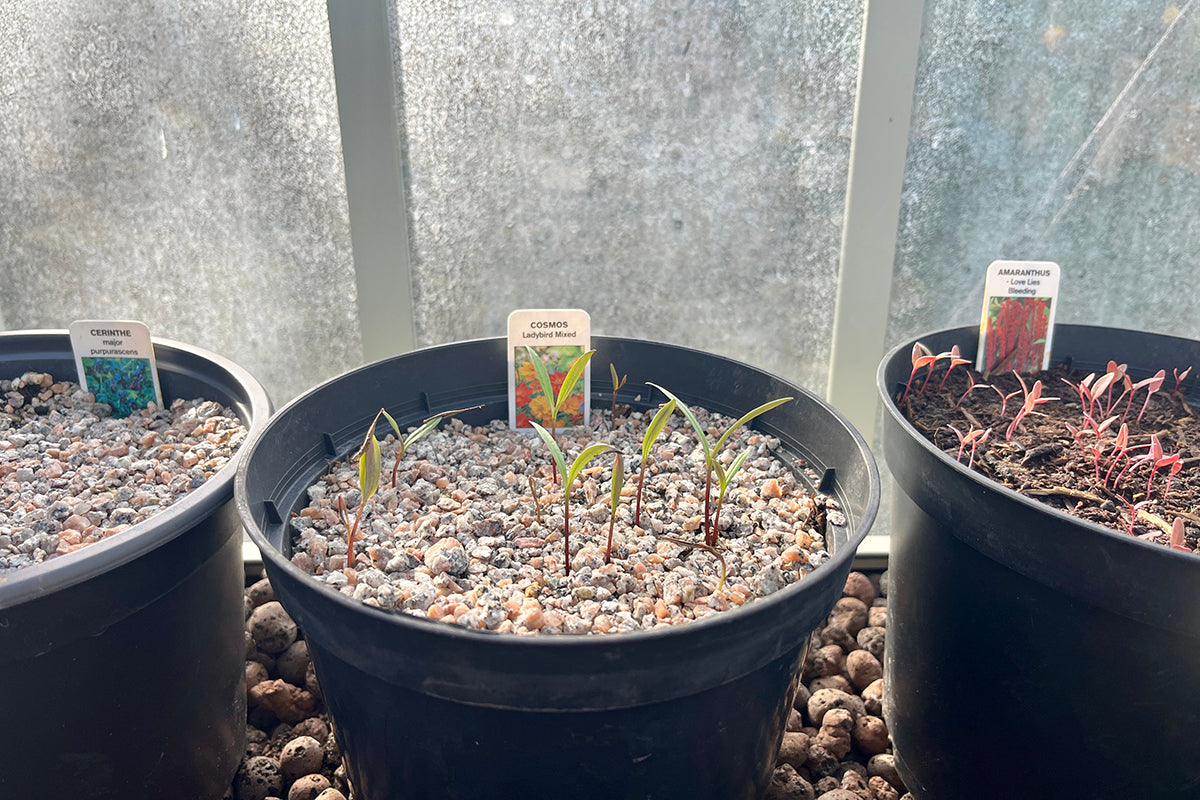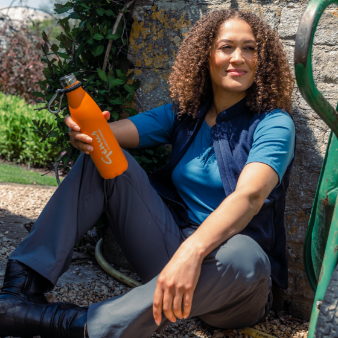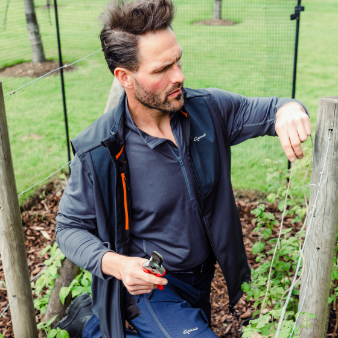Greenhouse report

We always demonstrate a degree of restraint and patience when it comes to sowing half hardy annual seeds in the spring. The resulting plants can’t be put outside until the frosts have ended and in the Cotswolds we’re usually looking to mid May before the greenhouse is emptied. Of course, there are always exceptions with the weather and a keen eye needs to be kept on reports from the Met Office for a number of weeks after planting.
The reason we tend to leave seed sowing later than some - the start of April usually - is because trays of plants galloping away with enthusiastic daily growth can quickly outgrow the limited greenhouse space available. It also negates the requirement for an additional potting-on as the plants get larger.
This year we’ve sown Cosmos ‘Ladybird Mixed’ a favourite., Amaranthus, Cerinthe major, Cosmos ‘Sensation’ and Tagetes.
In other parts of the greenhouse are well over 100 cuttings we’ve taken from our Pelargoniums, Salvia, Sage, and Hydrangeas while our Aeoniums and mature Pelargoniums have been kept ticking over with a light watering in their pots throughout the winter. With the winter salad coming to an end and soon to be cleared, tomato and cucumber plants are standing by to be planted out and start once again the annual cycle that we gardeners love so much.







